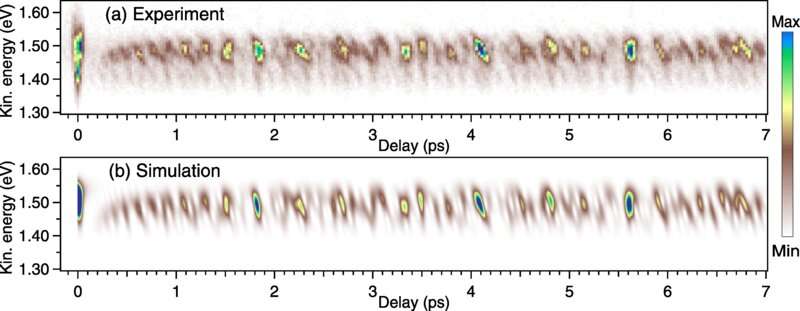October 31, 2022 report
A novel way to measure time using Rydberg states

A team of researchers working at the University of Uppsala in Sweden has discovered a novel way to measure time. They published their work in the journal Physical Review Letters.
Up until now, the means for measuring the passage of time has involved counting some predefined measurement unit from one point in time to another—for example, counting the seconds that pass as a person runs. Such a means of measuring time is the method used by traditional clocks and also by atomic clocks. In this new effort the researchers have found a way to measure the passage of time in a whole different way—by using the wave-like nature of Rydberg states.
Rydberg atoms are atoms that have been shot with lasers to push their electrons to extremely high energy states, which also pushes the electrons farther away from the nucleus. The way that the electrons move is described as their Rydberg state and the mathematical way that they are characterized is known as their wave packet.
Prior research has shown that when Rydberg wave packets encounter others of their kind, interference can occur. And when that happens, unique ripple patterns can arise. And, the researchers in this new effort note, if you have multiple wave packets moving around in the same quantum "pond," you get a lot of different types of interference with a lot of uniquely evolving patterns. And, they further noted, each unique pattern represents the unique amount of time it took to evolve compared with all the others in the vicinity. And that means they can be used as time stamps.
The researchers conducted a series of experiments that involved testing these time stamps to see if they could be used as a new way to measure time. Each involved exciting helium atoms with a laser pulse along with short pulses of ultraviolet light allowing the spectrum to be measured. They found that their "watch" as they called it could be run in a way that allowed measurements up to 81 picoseconds and that it had errors no larger than eight femtoseconds.
More information: Marta Berholts et al, Quantum watch and its intrinsic proof of accuracy, Physical Review Research (2022). DOI: 10.1103/PhysRevResearch.4.043041
Journal information: Physical Review Letters
© 2022 Science X Network


















